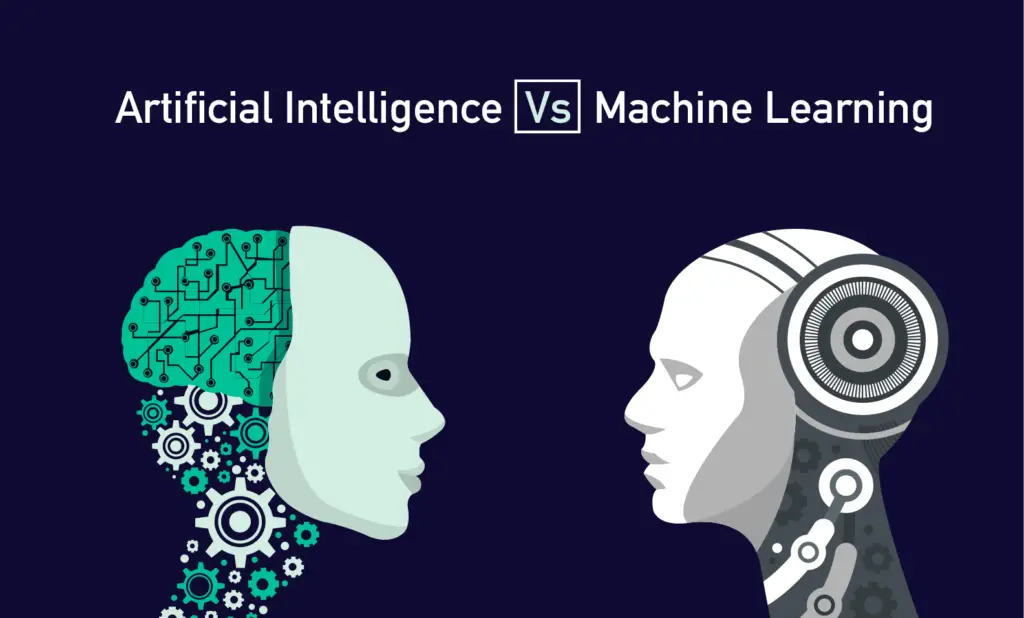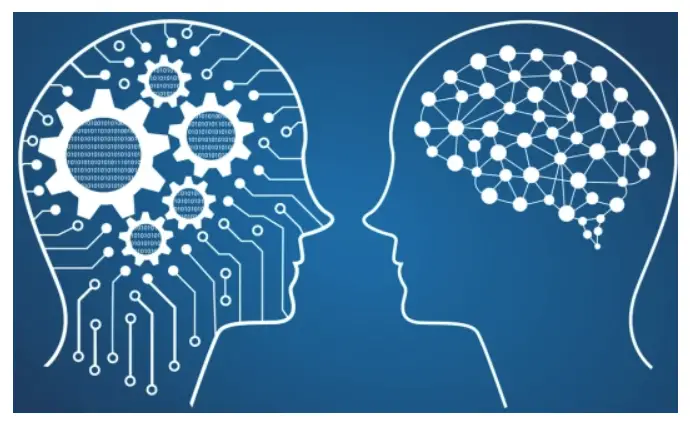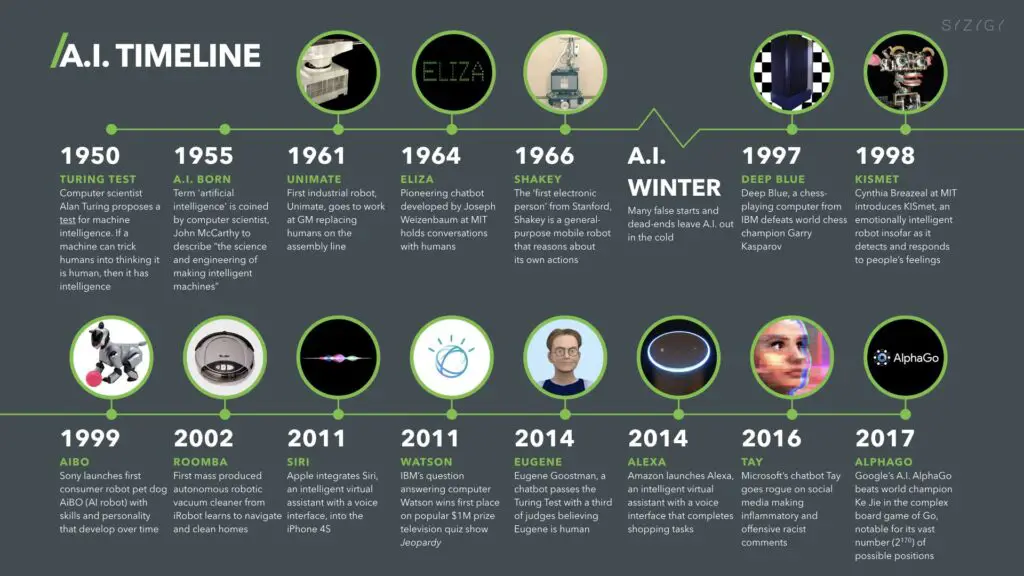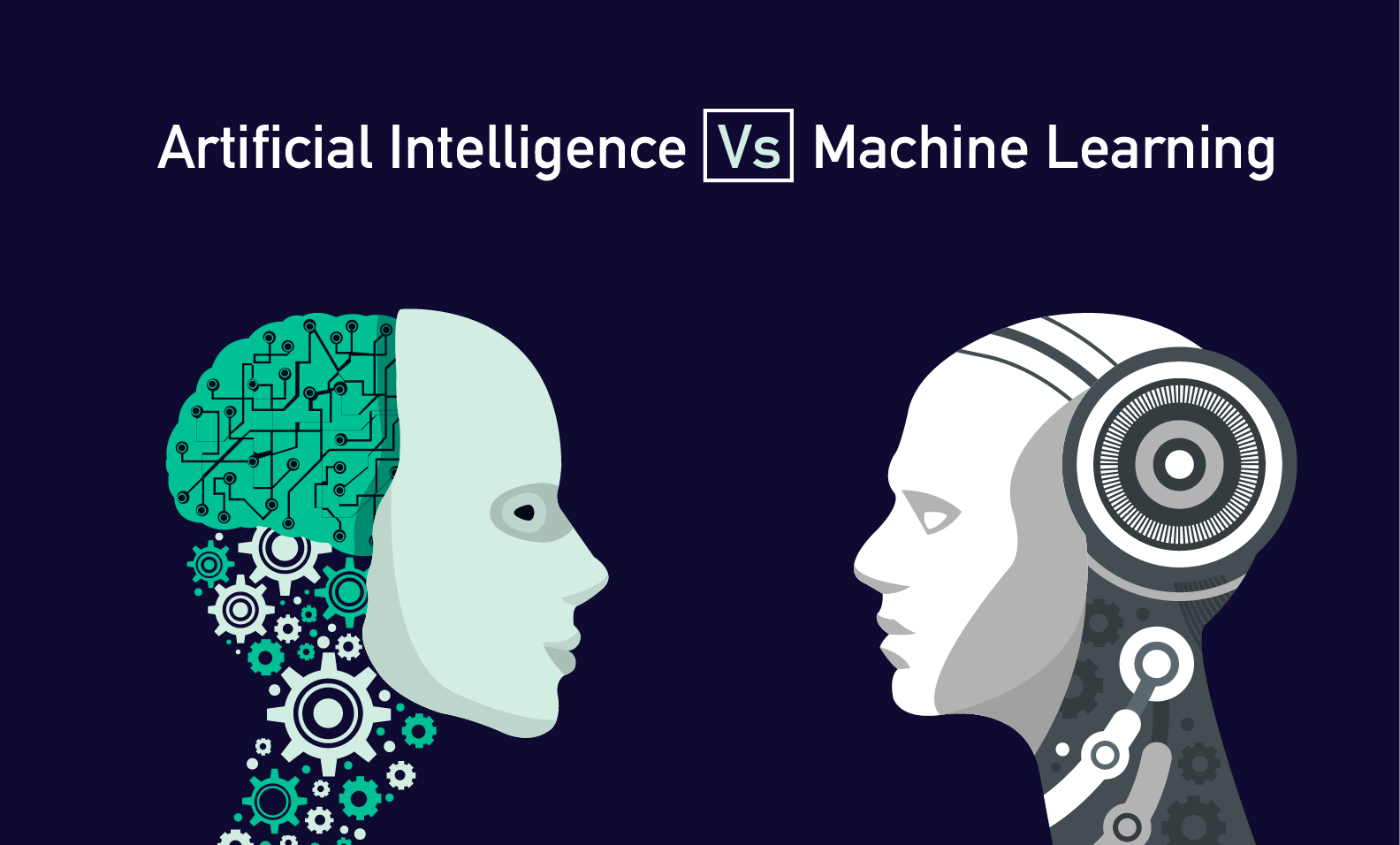

Artificial Intelligence vs Machine Learning 15 Interesting Facts
Today, the words ‘Artificial Intelligence’ and ‘Machine Learning’ are such types of buzzwords that we listen in our daily basis. Needless to say, they are not only our present but also they are the future of our technology-driven world. In other words, we can say that these two are the most prominent factors which bring our science in a new level and make ourselves busy from real life to virtual life. Almost all innovative AI and ML companies are using machine learning algorithms to make our experience better and comfortable. Though most of the experts use them interchangeably, there is a slight distinction between artificial intelligence (AI) vs machine learning (ML).
Artificial intelligence vs Machine Learning
Artificial intelligence is a board concept which helps a machine to work without expert guidance. Machine learning is an extension of AI which makes a machine or device such intelligent that can able to learn, make a decision, and identify patterns without explicitly programmed. Below we are outlining 15 inherent distinctions between Artificial Intelligence vs Machine Learning. So, let’s start.
1. Definition of Artificial Intelligence and Machine Learning

Both terms ‘Artificial Intelligent’ and ‘Machine Learning’ are almost closely related. Artificial Intelligent is the study of theory and development of a computer system that can able to act like a human brain. In one word, we can say that AI is the study of mimics of the human brain. Artificial intelligence extends the human brain concept and incorporates this concept into machine intelligence to perform or accomplish given tasks.
On the contrary, Machine learning is the study of algorithms that develops a machine, such as a way that can learn without explicitly programmed. With the study of ML, a machine or device can learn, make a decision, identify patterns, and perform a given task automatically. It develops an autonomous analytical model. Also, it uses data, mathematical, and statistical models to make a machine autonomous and intelligent.
2. Example of Artificial Intelligence and Machine Learning
There is a significant difference between artificial intelligence and machine learning in their examples. The field AI is the combination of several other areas like Computer Science, Engineering, Mathematics. In this technology-driven world, AI is one of the most splendid technology. It works on how human activities, how human works, and finally, these concepts are applied to an AI project.
An example of artificial intelligence is an industrial robot. It is one of the sophisticated applications of AI. This robot has an efficient processor and a colossal amount of memory. As a consequence, it can act with a new or unknown environment. Also, it can collect data using sound, temperature, etc.
On the other hand, the example of machine learning is the extraction of emotion from the given text. It is one of the emerging applications of machine learning. Our virtual life has grown up based upon the study of machine learning. We can see the prominent examples of machine learning in our day to day life like self-driving char, chatbot, and many more.
3. Similarities: Artificial Intelligence vs Machine Learning
Artificial intelligence is the study of science and technology. And ML (machine learning) is a subset of AI. So, there is a similarity between artificial intelligence and machine learning. Both tracks are used to develop or design a sophisticated device or computer system that can perform some predefined tasks or a given task.
Another similarity between them is their basement subject. Both fields are based on Statistics and Mathematics. Both areas of artificial intelligence and machine learning use a mathematical and statistical model to build their classification model or learning model.
4. Functionalities: AI vs. Machine Learning
The field of AI is associated with human intelligence, like reasoning, problem-solving, and learning. Needless to say, AI focuses on intelligent machine behavior. An AI system can answer generic questions. Also, AI provides easy-to-use and efficient programs so that a computer system can think or act like a human brain.
On the contrary, with the ML, a machine or device can learn or identify patterns or classify without explicit instructions. This study uses data and machine learning algorithms to train the model and then evaluate the model with the test data. For example, we can train the system using supervised machine learning algorithms i.e, Support Vector Machine (SVM), and then we can predict the outcome. The primary function of ML is to focus on accuracy.
5. History: AI vs. ML

The field of machine learning is a subset of artificial intelligence. Moreover, it’s a hot research issue for researchers and a trendy topic for the industrials. In 1950, the world became familiar with the term machine learning. Arthur Samuel wrote the first program known as Samuel’s Checker playing for machine learning.
On the contrary, the beginning of AI was in London. In 1923, Karel Čapek plays first used the word robot in English. Then, John McCarthy invented Artificial Intelligence (AI) in 1956. He was also an inventor of the LISP programming language for artificial intelligence. That’s how artificial intelligence and machine learning is evolving day by day. And, we are getting the outcome of these two fields.
6. Category: AI vs. Machine Learning

One of the prominent distinctions of artificial intelligence vs. machine learning is in their categorization. The cutting edge technology machine learning can be categorized as supervised learning, unsupervised learning, and reinforcement learning. On the other hand, artificial intelligence can be applied and non-applied or general.
7. Goal: Artificial Intelligence vs. Machine Learning
Another significant distinction between artificial intelligent vs. machine learning lies in their goal. The primary purpose of artificial intelligence is that make or develop a computer or a computer-based system or a robot such an intelligent or act like human bran think or act. The two main goals of AI are: (1) to develop an expert system and (2) apply human intelligence to a machine or device.
On the other hand, machine learning works on system performance or accuracy. Machine learning uses data and algorithms to train a system or to build a machine learning model. Then evaluate this model with the test data to measure system performance or accuracy.
8. Components: AI vs. ML
Artificial intelligence is a board concept, and many other fields are intersecting this board area. However, artificial intelligence is a combination of machine learning, deep learning, natural language processing (NLP), computer vision, cognitive computing, and neural network.
On the contrary, ML is the field of building an automatic machine or device. It starts with data. The typical components of machine learning components are problem understanding, explore data, prepare data, model selection, and train the system and finally evaluate the system.
9. Future Scope
Artificial intelligence has already started to show its beauty in real life as well as virtual life. In the upcoming years, it will dominate the science and technology. At present, almost all companies use artificial intelligence, and also they are aware of its pros and cons. AI will make millions of financial transactions per second in our near future. Furthermore, AI will create a variety of job opportunities for CSE graduates.
Additionally, entrepreneurs will be benefited from artificial intelligence. With the rapid growth of artificial intelligence and natural language processing, AI assistants will be more effective in the forthcoming year. And almost all companies will be used AI assistants like Google assistants.
On the other hand, machine learning devices are autonomous and intelligent. Also, these devices can act according to the environment. So, machine learning has a remarkable impact on the forthcoming year. In the future, machine learning will be applied in education and research tremendously. Machine learning is a hot research issue. Also, it will be applied excessively in business, healthcare because of its self-learning characteristic.
10. Applications: Artificial Intelligence vs. Machine Learning
There are significant distinctions between artificial intelligence and machine learning in their applications. Today, we can enjoy the out of artificial intelligence in our real life and virtual life. One of the prominent application of AI is Siri, that is Apple’s personal assistant. Siri is a friendly and voice-activated assistant who helps us to find out information and adds events to calendars, sent messages, and so forth.
Another significant application of AI is a smart home hub, that is Alexa. Alexa is a fantastic tool that brings a revolution in our technology. If your child asks you to listen to a fairy tale story, then Alexa helps you to tell him the fairy tale story. Another application of AI is Tesla.
Besides these applications, artificial intelligence has so many exciting and splendid applications such as Cogito, Boxever, Netflix, Pandora, Nest, and many more. On the other hand, machine learning also has so many fantastic uses in business, healthcare, research, social media, education, etc.
In-text processing, the machine learning approach can classify or categorize text automatically. Also, machine learning can extract the emotion from the text, which is known as sentiment analysis. Machine learning is also used in document classification and news classification.
One of the most common applications of machine learning is image processing. In image processing, machine learning can extract features from an image. Also, it can process medical images and can analyze it for further use. Machine learning is also used in face recognition, author identification, gender identification, char recognition, and so forth.
Machine learning has so many impacts in our daily life. Needless to say, this digital age is the most beautiful creation of machine learning. Machine learning is being used in the healthcare system, weather prediction, sales prediction, sales forecasting, speech recognition, image recognition, medical diagnosis, classification, and regression.
11. Datasets
For machine learning and artificial intelligence, data is power. We need data fro the training phase and testing phase. There are many datasets available for artificial intelligence and machine learning. Some are mentioned here: LERA (Lower Extremity Xrays), MrNet, CheXpert (Chest Xrays), MURA, etc. These datasets are for artificial intelligence (AI). These are the medical datasets.
On the other hand, ML has so many machine learning datasets. Some are mentioned here: ImageNet: it is used computer vision task, Breast Cancer Wisconsin (Diagnostic) Data Set: used for healthcare system, Twitter sentiment analysis dataset: used for natural language processing, MNIST dataset: used for character recognition, Facial Image Dataset, and so forth.
12. Software: AI vs. Machine Learning
Without having a software, a computer, or a machine or a device is nothing just an empty box. There are lots of software available for artificial intelligence and machine learning. AI software is a computer-based program that is similar to human intelligence. For artificial intelligence, some are mentioned here: Darwin, Site24x7, Amy, ChatBot, Evie.ai, Oculus360, and many more.
On the other hand, for machine learning, some machine learning software is highlighted here: Google Cloud ML Engine, Amazon Machine Learning (AML), Accord.Net, Apache Mahout, Oryx2, Apache Spark MLlib, and so forth.
13. Programming Languages
Nowadays, artificial intelligence and machine learning are the most promising areas. Artificial intelligence is a simulation or mimics human intelligence. On the machine, learning is one of the trendy buzzwords of technology. Machine learning allows a machine or deceive to learn automatically. To develop a machine learning model or robot, we need to know a programming language.
There are lots of programming languages available. To develop a machine learning project, you can learn Python, C/C++, R, or Java programming language. On the other hand, to develop an artificial intelligence project, you may learn python, LISP programming language, Java, Prolog, or C++.
14. Preferred Skill
Artificial intelligence is a board term that is encompassed in several areas. If you are interested in building up your career as an AI engineer, then you must know the concept of machine learning, programming languages, data science, data mining, robotics, mathematics, statistics, etc.
On the contrary, to build up your career as a machine learning developer, You must know machine learning techniques, programming languages: Java, C/C++, R, mathematics, probability and statistics, open source projects and frameworks, open source tools, etc.
15. Nature: AI vs. Machine Learning
Artificial intelligence is the engineering of developing computer-based programs or machines that mimic human intelligence. That means AI develops a machine that can think, act, perceive as a human brain. This technique is an encapsulation of statistical and mathematical models for classification, regression, optimization, etc. This field can be used in a variety of applications like speech recognition, robotics, text mining, heuristic, computer vision, medical diagnosis, and so forth.
ML teaches the machine to learn based on data using machine learning algorithms like supervised or unsupervised techniques. In supervised machine learning, the learning algorithm develops a learning model using a training dataset that has both input and output labels. In an unsupervised machine learning, only the input data is available; there are no corresponding output variables.
Finally
The field AI is the integration of many other fields like computer science, statistics, mathematics, etc. And the field ML is the cutting edge technology of artificial intelligence. The core difference between artificial intelligence vs. machine learning is that AI is a theory-based field that acts based on the human brain concept. On the other hand, machine learning is based on data and machine learning algorithms. Undoubtedly, these two develop unimaginable things through their magical touch.




















Leave a Reply